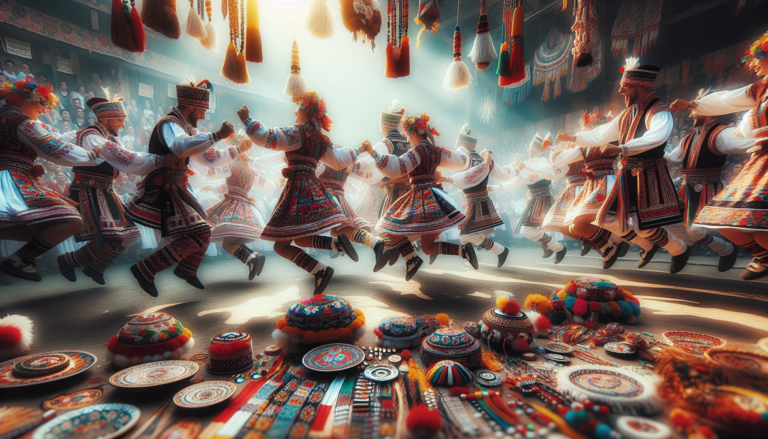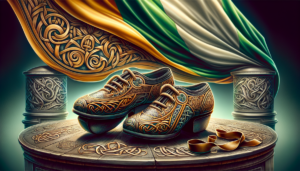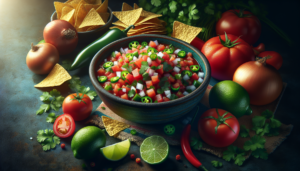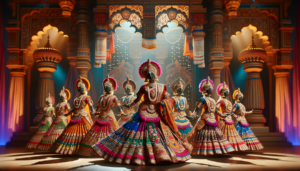Introduction to Folk Dance
Folk dance is a captivating and diverse art form that showcases the rich cultural heritage of communities around the world. These traditional folk dances have been passed down through generations, preserving the unique histories, customs, and values of various regions. From the lively steps of American square dancing to the vibrant costumes of Mexican folklorico, folk dance offers a window into the soul of a culture.
Definition and Characteristics of Folk Dance
At its core, folk dance refers to traditional dances that are specific to a particular culture or region. These dances often have deep historical roots and are performed as part of community celebrations, festivals, and social gatherings. Folk dances are typically characterized by their distinctive steps, formations, and music, which reflect the unique cultural identity of the people who created them.
| Characteristic | Description |
|---|---|
| Traditional | Passed down through generations, preserving cultural heritage |
| Community-oriented | Performed at social gatherings, festivals, and celebrations |
| Distinctive | Unique steps, formations, and music reflecting cultural identity |
The Role of Folk Dance in Cultural Heritage
Folk dance plays a vital role in preserving and celebrating cultural heritage. By participating in these traditional dances, people connect with their ancestors, share stories, and express pride in their cultural roots. Folk dance also serves as a powerful tool for community engagement, bringing people together to celebrate their shared history and values.
Engaging in folk dance allows individuals to:
- Connect with their cultural heritage
- Share stories and traditions with others
- Express pride in their cultural identity
- Strengthen community bonds
History of Folk Dance
The history of folk dance is as varied and complex as the cultures that created them. Each dance style has its own unique origins and evolution, shaped by the social, political, and economic factors of its time.
Origins and Evolution of Folk Dance
Many folk dances have ancient roots, with some dating back hundreds or even thousands of years. These dances often originated as part of religious ceremonies, agricultural celebrations, or social rituals. Over time, they evolved to reflect the changing needs and values of the communities that practiced them.
For example, the American square dance can trace its origins to European dance styles brought over by immigrants in the 17th and 18th centuries. As these dances mixed with African American and Native American influences, they eventually developed into the distinct style we know today.
Influence of Historical Events on Folk Dance
Historical events have also played a significant role in shaping the development of folk dance. Wars, migrations, and cultural exchange have all contributed to the spread and evolution of traditional dances around the world.
The Mexican folklorico dance, for instance, has been influenced by a range of cultural factors, including:
- Indigenous Mesoamerican dances
- Spanish colonial influences
- African rhythms and movements
These diverse influences have combined to create a vibrant and colorful dance style that reflects Mexico’s rich cultural heritage.
Different Styles of Folk Dance
One of the most fascinating aspects of folk dance is the incredible diversity of styles found around the world. Each region has its own unique dances, reflecting the local culture, history, and values.
American Folk Dance Styles
American folk dance encompasses a wide range of styles, from the energetic square dance to the graceful clogging. These dances reflect the diverse cultural influences that have shaped American society over the centuries.
| Dance Style | Description |
|---|---|
| Square Dance | Lively dance featuring four couples in a square formation |
| Clogging | Percussive dance style characterized by rapid foot movements |
| Contra Dance | Social dance performed in long lines of couples |
These traditional dances continue to be enjoyed by enthusiasts across the country, celebrating the rich tapestry of American folk culture.
Mexican Folklorico Dance
Mexican folklorico dance is a vibrant and expressive art form that showcases the country’s diverse cultural heritage. Characterized by colorful costumes, lively music, and intricate footwork, folklorico dances tell stories of love, celebration, and regional pride.
Some of the most popular folklorico dances include:
- Jarabe Tapatío: Mexico’s national dance, also known as the “Mexican Hat Dance”
- Danza Azteca: A spiritual dance that honors Mexico’s Aztec heritage
- Baile Folklórico: A collection of dances from different regions of Mexico
These dances are an integral part of Mexican cultural celebrations and are enjoyed by audiences around the world.
European Folk Dance Styles
Europe boasts an incredible diversity of folk dance styles, each with its own unique history and cultural significance. From the lively Irish step dance to the elegant Austrian waltz, these dances reflect the rich traditions of the continent.
| Country | Notable Folk Dances |
|---|---|
| Ireland | Irish Step Dance, Ceili Dance |
| Spain | Flamenco, Jota, Sevillanas |
| Greece | Sirtaki, Kalamatianos, Zeibekiko |
These traditional dances continue to be an important part of European cultural heritage, celebrated at festivals and events throughout the region.
Cultural Significance of Folk Dance
Beyond its artistic and entertainment value, folk dance holds immense cultural significance for the communities that practice it. These dances serve as a powerful medium for cultural expression, communication, and social bonding.
Folk Dance as a Medium of Cultural Expression
Folk dance provides a unique outlet for people to express their cultural identity and values. Through the movements, costumes, and music of traditional dances, participants can communicate stories, emotions, and beliefs that are deeply rooted in their cultural heritage.
For example, the Hopi Snake Dance of the Native American Puebloan people is a sacred ritual that expresses the tribe’s connection to nature and the spiritual world. By performing this dance, Hopi dancers affirm their cultural identity and honor their ancestors.
Community Engagement through Folk Dance
Folk dance also plays a vital role in fostering community engagement and social bonding. By coming together to learn, practice, and perform traditional dances, people strengthen their connections to one another and to their shared cultural heritage.
Participating in folk dance can help individuals:
- Develop a sense of belonging and cultural pride
- Build relationships with others who share their interests and values
- Engage in a healthy and enjoyable form of physical activity
- Preserve and pass on cultural traditions to future generations
Through folk dance, communities can celebrate their unique identities while also finding common ground with people from other cultures and backgrounds.
Conclusion
In conclusion, folk dance is a vital and vibrant art form that holds immense cultural significance for communities around the world. From the lively steps of American square dancing to the colorful costumes of Mexican folklorico, these traditional dances offer a window into the rich histories, values, and identities of the people who created them.
The Enduring Legacy of Folk Dance
As we look to the future, it is clear that folk dance will continue to play an important role in preserving and celebrating cultural heritage. By engaging in these traditional dances, people can connect with their ancestors, express their cultural identities, and strengthen their bonds with one another.
Whether performed on stage or in a community hall, folk dance has the power to bring people together, foster understanding, and promote cultural pride. As long as there are communities that value their traditions and heritage, folk dance will continue to thrive as a cherished and enduring art form.






